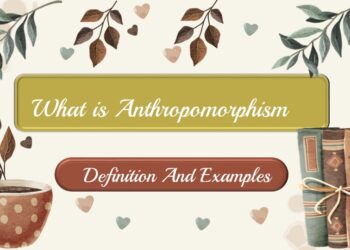What is Anaphora Definition And Examples
Anaphora is a rhetorical device that involves the deliberate repetition of a word or phrase at the beginning of successive clauses, sentences, or verses. It is commonly used in literature, poetry, speeches, and other forms of discourse to create emphasis, evoke emotions, and enhance the rhythm and flow of the text. Anaphora adds a sense of power, coherence, and memorability to the words being repeated, making them stand out and resonate with the audience.
The repeated words or phrases in anaphora can be single words, short phrases, or even longer sentences. What is Anaphora Definition And Examples The purpose of anaphora is to highlight a particular idea, concept, or emotion, and to reinforce it through repetition. What is Anaphora Definition And Examples By structuring the text in a repetitive manner, anaphora lends a poetic quality to the language and contributes to its overall impact.
Also Read-
- What is Analogy Definition And Example
- What is Allusion Definition And Examples
- What is Alliteration Definition And Examples
One of the most famous examples of anaphora is found in Martin Luther King Jr.’s “I Have a Dream” speech:
“I have a dream that one day this nation will rise up and live out the true meaning of its creed: ‘We hold these truths to be self-evident, that all men are created equal.’ I have a dream that one day on the red hills of Georgia, the sons of former slaves and the sons of former slave owners will be able to sit down together at the table of brotherhood. What is Anaphora Definition And Examples I have a dream that one day even the state of Mississippi, a state sweltering with the heat of injustice, sweltering with the heat of oppression, will be transformed into an oasis of freedom and justice.”
What is Anaphora Definition And Examples In this excerpt, the repetition of “I have a dream” at the beginning of each sentence creates a powerful and memorable effect. What is Anaphora Definition And Examples It emphasizes the vision and hope that King is expressing, reinforcing his message and inspiring the listeners.
Examples Of Anaphora
- Winston Churchill’s famous speech during World War II: “We shall fight on the beaches, we shall fight on the landing grounds, we shall fight in the fields and in the streets, we shall fight in the hills; we shall never surrender.”
- Maya Angelou’s poem “Still I Rise”: “You may write me down in history With your bitter, twisted lies, You may trod me in the very dirt But still, like dust, I’ll rise.”
- William Shakespeare’s play “Macbeth”: “Tomorrow, and tomorrow, and tomorrow, Creeps in this petty pace from day to day, To the last syllable of recorded time.”
- John F. Kennedy’s inaugural address: “And so, my fellow Americans: ask not what your country can do for you – ask what you can do for your country.”
- Emily Dickinson’s poem “Hope is the thing with feathers”: “Hope is the thing with feathers That perches in the soul, And sings the tune without the words, And never stops at all.”
- Nelson Mandela’s speech at his trial in 1964: “During my lifetime, I have dedicated myself to this struggle of the African people. I have fought against white domination, and I have fought against black domination. What is Anaphora Definition And Examples I have cherished the ideal of a democratic and free society in which all persons live together in harmony and with equal opportunities.”
Conclusion
Anaphora is a rhetorical device that involves the intentional repetition of a word or phrase at the beginning of successive clauses, sentences, or verses. What is Anaphora Definition And Examples It is widely used in literature, speeches, and poetry to create emphasis, evoke emotions, and enhance the rhythm and flow of the text. What is Anaphora Definition And Examples Anaphora adds power, coherence, and memorability to the repeated words, making them stand out and resonate with the audience.
FAQ.
Q: What is the purpose of using anaphora?
A: The purpose of anaphora is to emphasize a particular idea or emotion by repeating key words or phrases. It creates a sense of rhythm, adds impact to the message, and enhances the overall persuasive or artistic effect of the text. Anaphora helps to engage the audience, reinforce the central theme, and make the words more memorable.
Q: How does anaphora contribute to the flow of a text?
A: Anaphora adds a rhythmic quality to the language, creating a sense of flow and continuity. By repeating certain words or phrases, it establishes a pattern that guides the reader or listener through the text, making it easier to follow and comprehend. The repetition creates a natural cadence, enhancing the overall reading or listening experience.
Q: What is the difference between anaphora and repetition?
A: Anaphora is a specific form of repetition that involves the repetition of words or phrases at the beginning of successive clauses or sentences. While repetition can occur anywhere in a text, anaphora specifically focuses on the repetition at the beginning of phrases or lines, creating a more structured and rhythmic effect.
Q: Is anaphora limited to certain forms of communication?
A: No, anaphora can be used in various forms of communication, including literature, speeches, poetry, songs, and even everyday conversations. It is a versatile device that can be employed in different contexts to enhance the impact and effectiveness of the message.
Q: Can anaphora be used in languages other than English?
A: Yes, anaphora can be used in any language that allows for repetition and rhetorical devices. While the specific words and structures used may vary across languages, the fundamental concept of repeating words or phrases for emphasis and effect can be applied universally.




